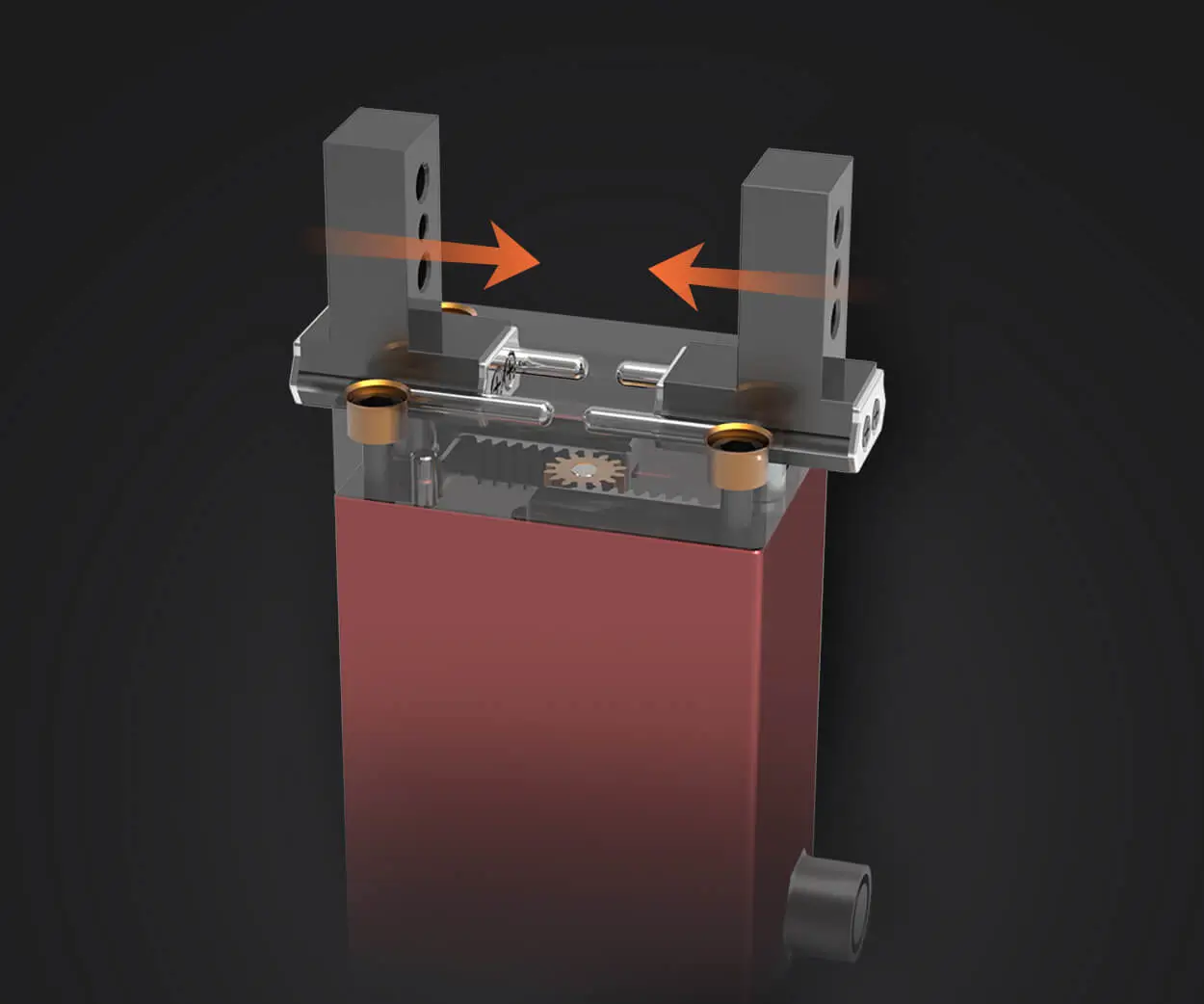Imagine a world where machines move with precision, speed, and adaptability—an intricate dance of electrical and mechanical engineering that makes automation possible. At the heart of many modern systems lie two prominent players: the DC servo motor and the stepper motor. Though both serve the fundamental purpose of converting electrical energy into motion, their characteristics, control mechanisms, and optimal applications set them apart in fascinating ways.

Understanding the Basics: What Are DC Servo Motors and Stepper Motors?
A DC servo motor is a type of direct current motor equipped with a feedback system, often a rotary encoder or a potentiometer, that constantly monitors the position of the motor shaft. This feedback allows for precise control of speed and position. Essentially, a DC servo is like a highly trained athlete who responds immediately to commands, adjusting their effort to achieve accurate movements.
By contrast, a stepper motor moves in discrete steps, each representing a fixed angular movement. It operates by energizing coils in a specific sequence, causing the rotor to "step" from one position to the next. Think of it as a dancer taking precise, measured steps on a choreographed path. Its inherent ability to move to a set position without needing feedback makes it a straightforward choice for many automation tasks.
Control Principles: Precision and Feedback Systems
The core difference begins with their control strategies. DC servo motors utilize closed-loop control systems. An external controller sends commands for the desired position or speed, while sensors provide real-time feedback, which the system continually adjusts to meet the target. This feedback loop ensures high accuracy, smooth motion, and dynamic response even under varying loads.
Stepper motors, on the other hand, are typically driven by open-loop control systems. They receive pulses from a driver, which determines how many steps to move and in which direction. While simpler and less expensive, this open-loop design can lead to issues like missed steps or loss of position if the motor is overloaded or experiences significant resistance.
Precision and Accuracy: Comparing the two
When it comes to precision, both motors excel, but in different contexts. Stepper motors inherently provide positional accuracy based on their step count. For example, a typical 1.8-degree stepper motor can achieve 200 steps per revolution—meaning each step moves the rotor by 1.8 degrees. For applications that demand repeatability and simple positioning without feedback, this is often sufficient.
DC servo motors, however, can achieve much finer control. With high-resolution encoders—sometimes capable of providing thousands of pulses per revolution—the servo motor can achieve extremely accurate positioning, often within a fraction of a degree. Moreover, because of their feedback-controlled design, servo systems can correct errors instantly, ensuring high fidelity in motion.
Speed and Torque Characteristics
Speed control is another fundamental difference. DC servo motors excel at maintaining high speed with consistent torque, even under varying loads. Their design allows them to accelerate quickly and respond dynamically to changing conditions, making them ideal for applications like CNC machines and robotics where rapid, precise movement is essential.
Stepper motors are also capable of high torque at low speeds but tend to lose torque as speed increases, especially beyond a few thousand RPM. They are more suitable for applications where torque at low speeds is needed and where the load conditions are predictable.
Cost and Complexity
In the realm of cost, stepper motors generally come out ahead. They are simpler, require less sophisticated control electronics, and are easier for beginners to work with. This makes them popular for hobbyist projects, 3D printers, and pick-and-place machines.
DC servo systems, with their feedback components and more complex control electronics, tend to be more expensive. However, their improved accuracy, higher speed, and dynamic response can justify the higher investment in industrial settings.
Applications in Industry and Hobby
The choice between a DC servo motor and a stepper motor is often dictated by application needs. Stepper motors dominate in CNC routers, 3D printers, and small automation tasks where cost-effectiveness and straightforward control are priorities.
DC servo motors find their niche in sophisticated robotic arms, aerospace systems, and high-performance industrial machinery requiring rapid acceleration, high accuracy, and adaptability under load variations.
Efficiency and Energy Consumption
Efficiency varies as well. DC servo motors are typically more efficient overall because they operate at fixed voltage and generate less heat when properly controlled. Their ability to modulate power precisely to meet load demands prevents unnecessary energy expenditure.
Stepper motors, especially when driven in full-step or half-step modes, are less efficient because they often consume power continuously even when stationary to maintain holding torque. Modern microstepping techniques have improved this to some extent, but energy consumption remains relatively higher.
Advantages and Limitations at a Glance
DC Servo Motor:
High precision with feedback Excellent speed control and dynamic response Suitable for high-performance applications More complex and costly Better energy efficiency
Stepper Motor:
Simpler control, no feedback needed Good positional accuracy in open-loop systems Cost-effective and easy to implement Limited speed and torque at high RPMs Risk of missed steps without feedback
This foundational understanding sets the stage for further exploration into specific applications, performance comparisons, and selecting the right motor for your project. Whether you need the finesse of a servo or the straightforward reliability of a stepper, recognizing their unique strengths and limitations enables smarter engineering decisions.
Established in 2005, Kpower has been dedicated to a professional compact motion unit manufacturer, headquartered in Dongguan, Guangdong Province, China.




































